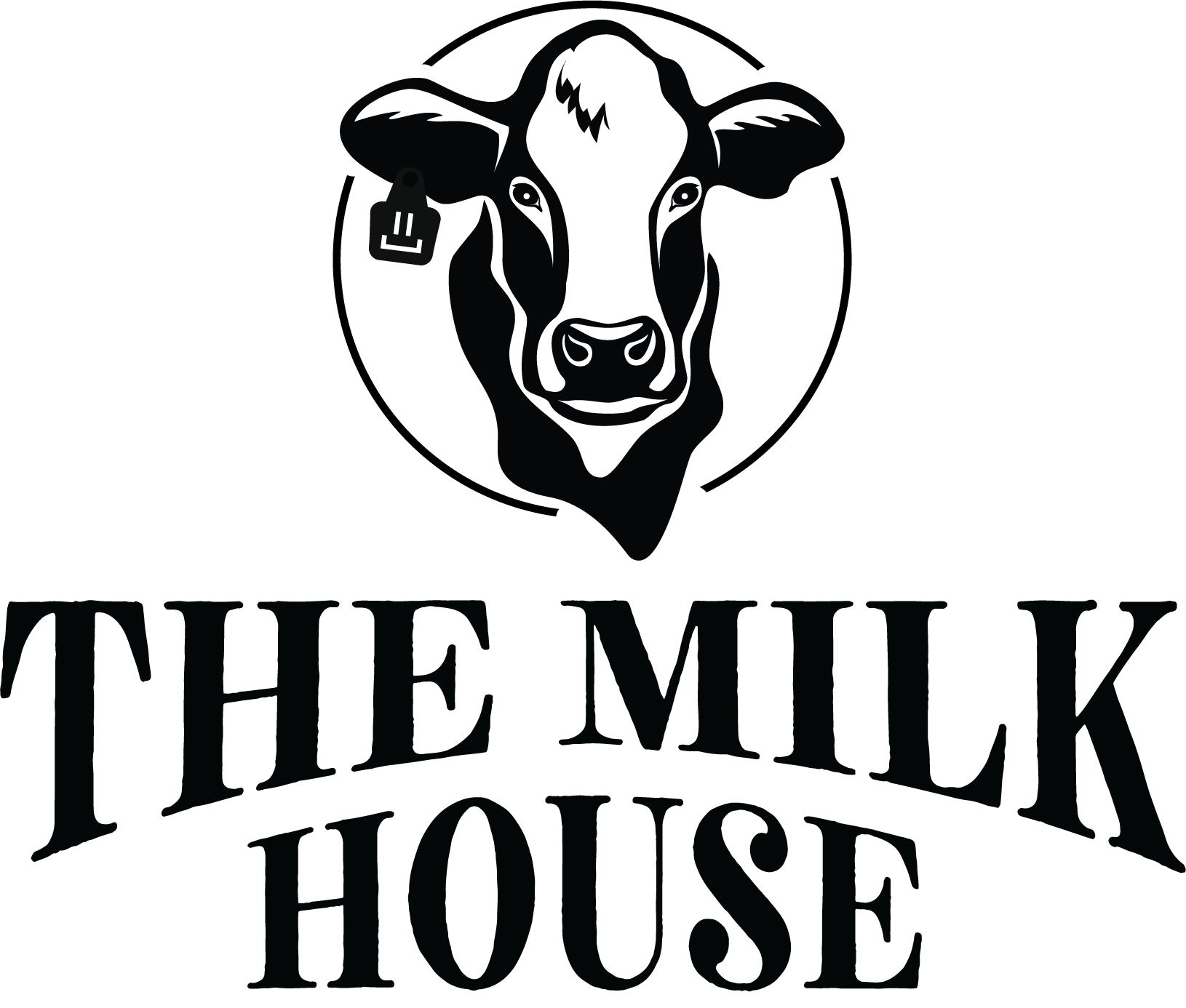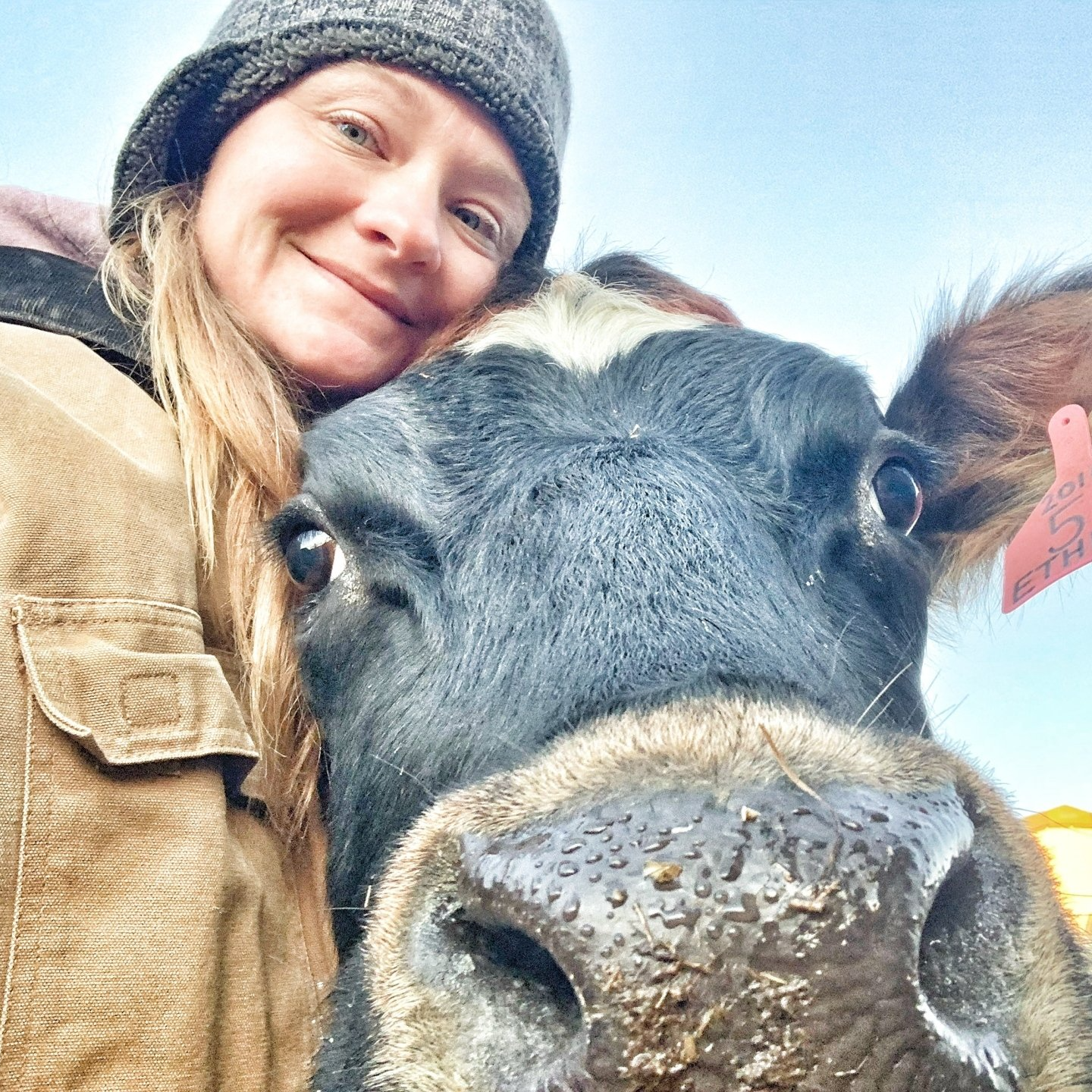Why Raw Milk?
Many people hear radical misconceptions about raw milk, decide they don't want anything to do with it and continue drinking less than impressive, pasteurized milk. Before founding The Milk House, Malloree Barnes was not a raw milk believer. At 30 years old, She had never tried raw milk in her life. She had heard about raw milk and how it could make you sick. Malloree was one of the first ones to feed into this "theory." After research and discussions with raw milk drinkers, she decided it was worth giving a try. After a couple of years of drinking raw milk, her family is sick much less frequently and enjoys the health benefits of drinking raw milk.
There are two types of raw milk. Raw milk meant for pasteurization and raw milk meant for human consumption.
Raw milk intended for pasteurization is collected into bulk tanks at large dairy facilities. This milk may not be the cleanest milk but with the pasteurization process all bacteria will be killed leaving the milk free of bacteria ridden disease.
Raw milk intended for human consumption is processed with quality in mind. Cleanliness is the key and making sure equipment and cows are sterilized and disinfected is of upmost importance. Filtering milk and cooling it quickly is priority.
Learn more in the FAQ below.
If you have any questions, please contact us, and we can try to help you out. We always encourage you to do your research and make an informed decision.
FAQ
What is Raw Milk?
Raw milk is the purest and freshest form of milk. This milk is straight from the cow and will separate into milk fat (top of gallon) and skim milk (bottom of gallon).
How is A2/A2 Raw Milk different than other raw milk?
A2/A2 Protein Raw Milk is the closest form of milk to the natural milk that humans make. Humans naturally produce A2/A2 protein milk! Over time with the domestication of cows, A1/A2 has become the most common type of milk protein, which is harder for the human stomach to digest (especially if you have intolerances to milk). We have an all A2/A2 milk cow herd and only produce the top end milk that is easiest on a persons stomach.
What are some health benefits of Raw Milk?
The fresh milk straight from the cow is quickly cooled down and stored. This process allows all of the natural milk nutrients to be preserved and left for you to enjoy!
Raw milk is rich in natural vitamins, food enzymes, and beneficial bacteria. It is a living food. Raw butterfat is rich in conjugated linoleic acid, a trans-fatty-acid (a good trans-fat). These are only a few of the many benefits!
Is raw milk safe, or is it full of bacteria?
Yes, raw milk has bacteria, but why should that mean it isn't safe? The word "bacteria" can ignite paranoia faster than any other term, but the truth is that raw milk is completely safe. Raw milk has good bacteria that overtakes any harmful bacteria in milk.
How is Pasteurized milk different from Raw milk?
Pasteurized milk gets heated to such a high temperature that it kills the most nutrient valuable components within the raw milk. Pasteurized milk has reduced nutritional qualities. Pasteurization reduces the amount of iron, copper, & manganese, and vitamins C & B6 in milk. Toss in the indigestible nature of pasteurized milk proteins along with the elevated immune response, and you'll find that pasteurized milk isn't a great choice.
Does Raw Milk clabber?
Yes! Clabber is a type of soured milk produced by allowing unpasteurized milk to turn sour (ferment) at a specific humidity and temperature. Over time, the milk thickens or curdles into a yogurt-like substance with a strong, tart flavor.
How do we keep the milk clean and maintain a clean environment?
We milk in a clean stall and clean the floor shavings twice daily.
The cows' udders/teats are disinfected and stripped (the first 3-5 pulls on their teats do not go into the collected milk) before putting on the milking claw.
The milk goes directly into an enclosed bucket to keep the milk free of impurities. The cow's teats are dipped into an iodine liquid to protect her from potential mastitis after milking.
We also clean and disinfect our milking equipment after each milking, ensuring it is fresh and ready for the next milking.
How do we bottle our milk?
After milking, our milk is filtered (to strain any debris out of the milk) and put into quality glass jars. Our milk is then placed in a cold fridge to start the cooling process. From cow to fridge, we strive to cool our milk within 15-20 minutes.
What do our cows eat?
Our milking cows are fed free-choice 3rd or 4th cutting Alfalfa hay and free choice quality grass hay. They also get to enjoy cracked corn during their milking sessions twice a day. Their access to unlimited clean, fresh water 24 hours a day is very important as well. During the summer, they also get to graze on grass.
How long do we milk our cows?
This differs depending on the cow. Some only milk for six months. We will milk them no longer than nine months before we give them a break and let them start preparing for their next baby (2-3 months later).
Do we have milk year-round?
Yes! We have specifically developed our breeding program to make sure we continually keep 2-4 fresh milk cows all year long.
When the cows calve, what do we do with the calves?
We pride ourselves on being able to keep the calf with the cow for one month. We do a calf share in the beginning to help give the baby a great start. After taking the calf off of the mama cow, we let a nurse cow finish raising the calf. The nurse cow gives the baby the same great milk and nurtures it until weaning time.

